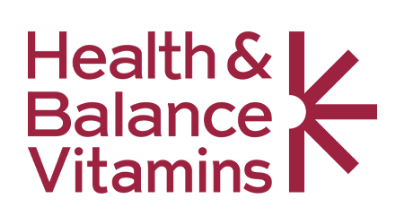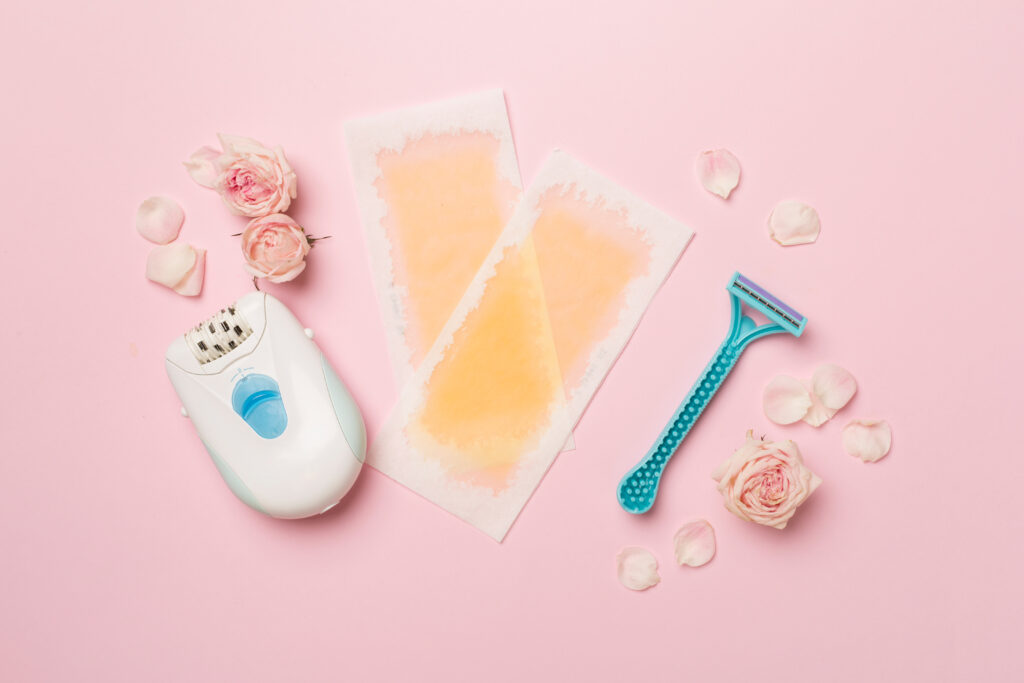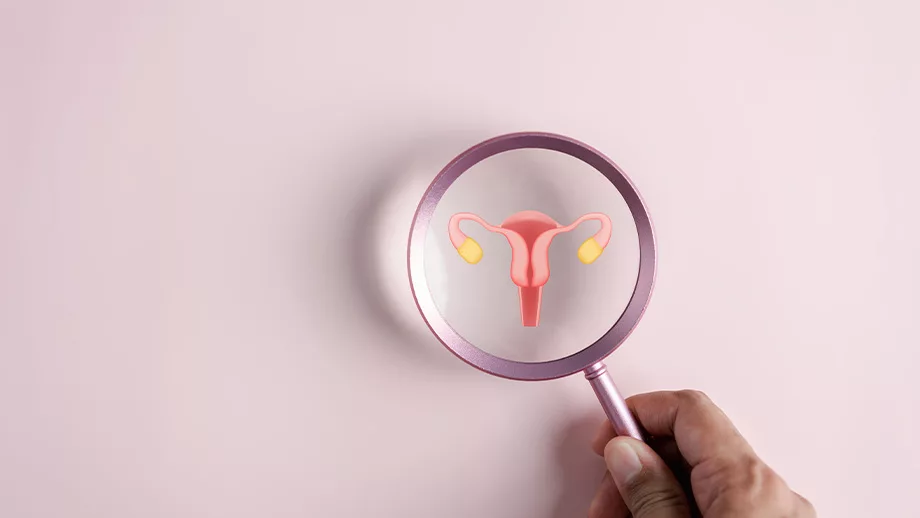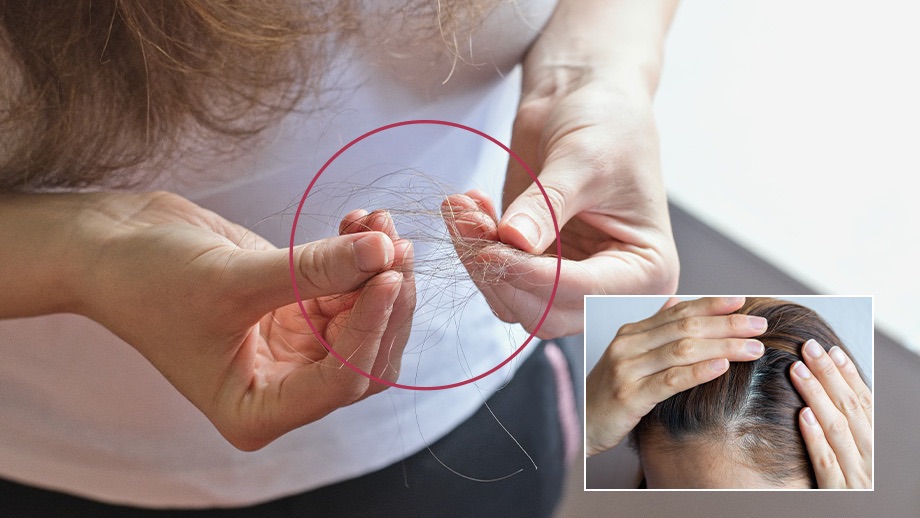Around 65% to 75% of women with polycystic ovarian syndrome experience excess facial hair growth. But this isn’t a skin issue; it’s a hormone issue.
This physical symptom of underlying hormonal imbalances can cause emotional tolls and low self-esteem. If you experience PCOS facial hair, we’ll explain what you need to know to understand what it is, why it happens, and how to treat it. So let’s jump in.
What Is PCOS Facial Hair?
Women with polycystic ovarian syndrome may experience dark, thick, or coarse hairs on the chin, cheeks, lips, jawline, and neck.
Some women have different amounts of excess hair growth or only in certain areas. Removal methods may cause ingrown hairs, irritation, discolouring, and acne, worsening this PCOS symptom. Let’s learn why this happens.
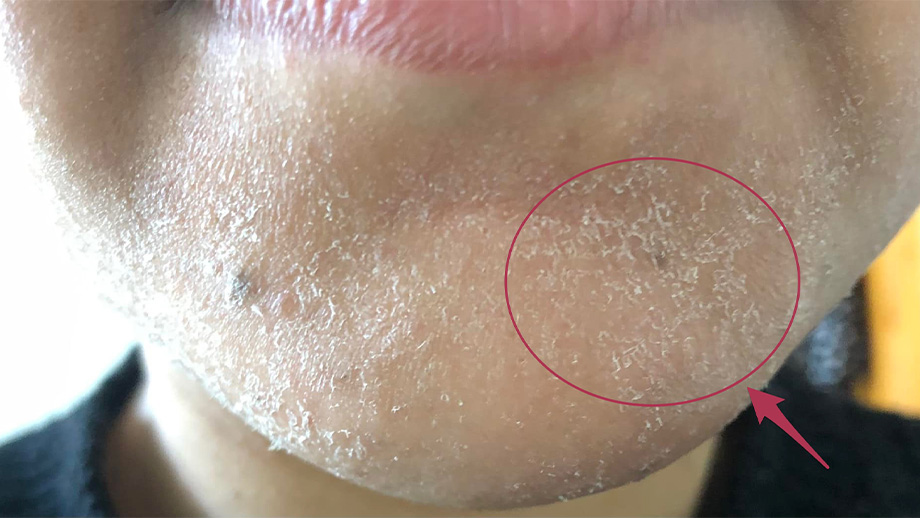
What Comes After Waxing / Zaheeda P R.
What Causes Facial Hair in PCOS?
PCOS facial hair, known as hirsutism, is male-patterned hair growth in a woman caused by high levels of male sex hormones known as androgens. These male hormones naturally occur in women but in lower amounts.
Higher-than-average androgen hormones trigger the over-activity of androgen receptors in cells leading to excessive hair growth. When those hormone levels increase, it can cause various symptoms, including excess facial hair, abdominal weight gain, and irregular menstruation.
High androgen levels in PCOS are not fully understood, but individuals have methods for treating the symptoms. Additionally, hirsutism can have different root causes, such as insulin resistance or hyperandrogenemia. Knowing the main driver in your body will help you form a treatment plan.
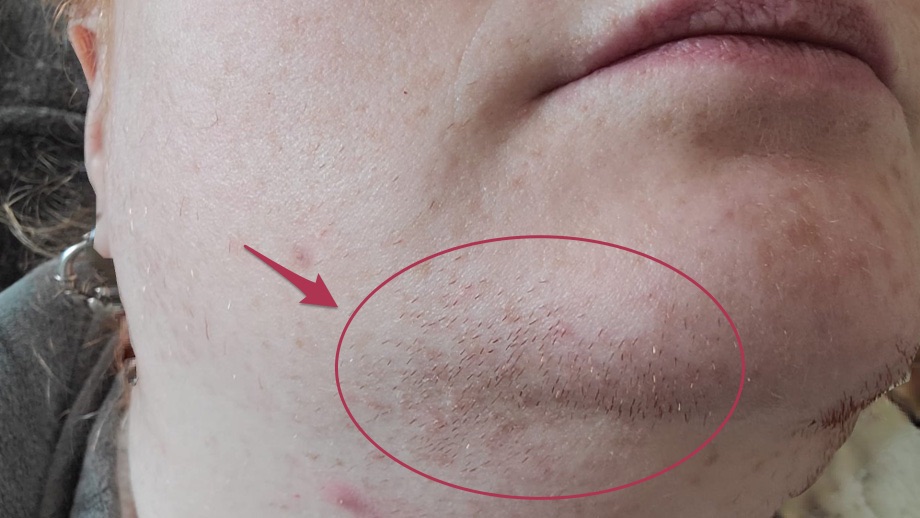
Insulin Resistant-Driven Hirsutism / Leslie V.
Where Can You Grow Excess Hair With PCOS?
This unwanted hair caused by PCOS and hirsutism can appear in other places on the body other than the face, including the neck, thighs, belly, back, buttocks, arms, and chest.
Why these areas specifically? These areas have more androgen receptors. You may first notice facial hair growth on your chin, upper lip, and cheeks as these areas are more visible. But no matter where the excess hair grows, it can cause significant stress and poor body image.
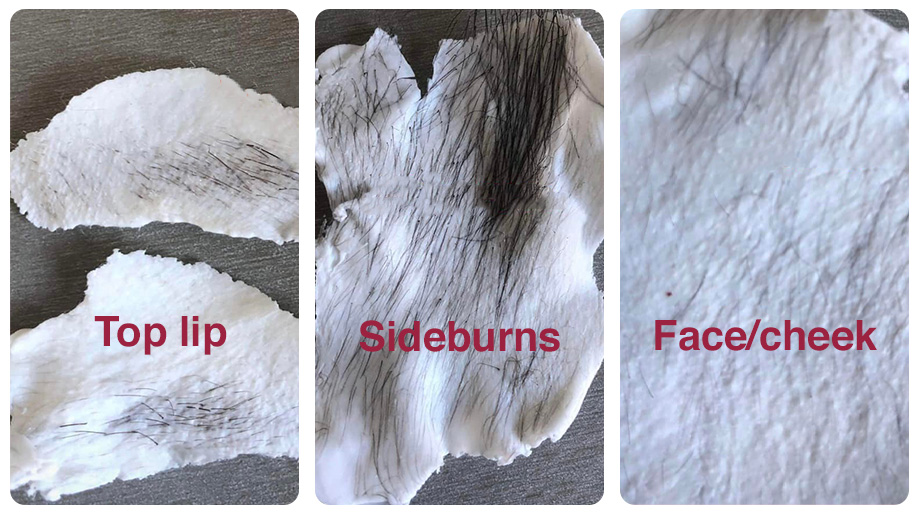
The Result From Waxing / H&B Facebook Support Group
Can PCOS Facial Hair Go Away?
Everybody has hair follicles over the entire body except for the palms and the soles of the feet. However, much of this hair is short and nearly invisible. Thus, it’s normal to want to get rid of it when you have thick, dark, and coarse hair.
Hair has a natural growth cycle that starts in the follicle just below the skin’s surface. You can decrease the amount or frequency of PCOS facial hair growth, but without action, it’s unlikely to go away by itself.
You can talk to your medical provider about treating hirsutism or safe hair removal options. We’ll learn how to treat excess facial hair later on, but first, let’s understand how doctors diagnose this condition.
How Is Hirsutism Diagnosed?
You should visit your doctor to know if PCOS causes your facial hair. You can also see specialists such as dermatologists or obstetricians and gynecologists.
These doctors can perform exams and do blood work to get to the root cause of your facial hair.
Blood Tests
As high androgen levels can cause hirsutism, your doctor may draw blood to see your hormone levels. They may specifically look at free or total testosterone, dehydroepiandrosterone (DHEA), and dihydrotestosterone (DHT).
These stimulate the development of male-patterned characteristics. Your doctor may determine that you have excess levels of these hormones that may contribute to or cause hirsutism.
Exams
Your doctor may also do a physical examination to see where your facial hair grows and what it looks like. They may decide to do other exams to know if you have polycystic ovarian syndrome that may cause excess facial hair growth.
These exams may include ultrasounds or transvaginal ultrasounds to look at the condition of the ovaries. Depending on the results of these exams and other criteria, your doctor may diagnose you with PCOS and hirsutism.
What If I Have Facial Hair, But My Blood Tests Are Normal?
The ranges doctors use for determining if a woman has high androgens are wide. Additionally, each person has a different sensitivity and reaction to hormones in their body.
So while your blood work may say your testosterone and other androgens fall within a normal range doesn’t mean they still can’t contribute to facial hair growth.
Additionally, PCOS isn’t the only cause of hirsutism; you may experience familial hirsutism, which passes down genetically from your family.
According to the Mayo Clinic, “Women of Mediterranean, Middle Eastern, and South Asian ancestry are more likely to have more body hair with no identifiable cause than are other women.”
Can You Treat Hirsutism Naturally?
If you need solutions for managing your facial hair, you can do so naturally or with the help of other treatments.
Different treatments will work for some individuals and not for others. Talk with your healthcare provider for more specific options for you. But we’ll discuss some of the natural ways to treat hirsutism.
Supplements
Dietary supplements are either derived from natural plant sources or lab-derived synthetic nutrients to supplement or add to an existing diet.
Certain supplements can block androgen receptors or reduce testosterone and its effects. These anti-androgen supplements include zinc, saw palmetto, spearmint, and N-acetyl cysteine (NAC), among others.
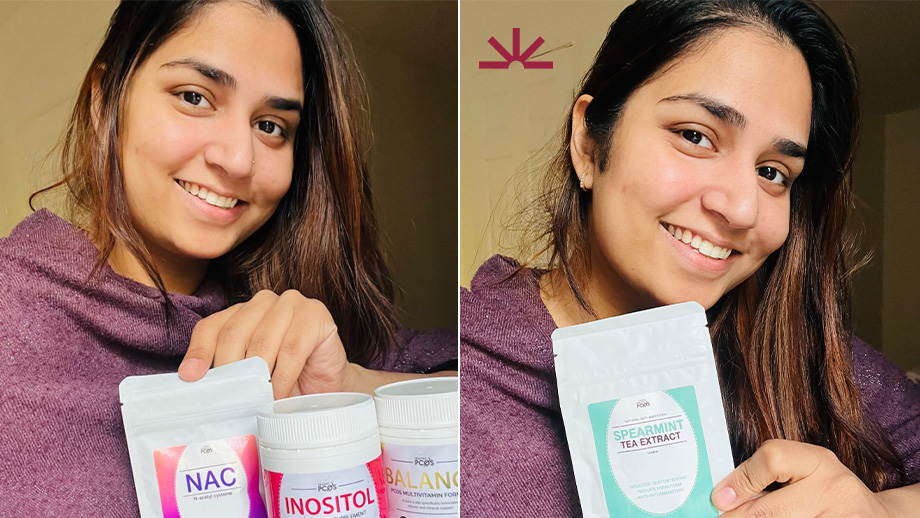
H&B Vitamins / Sukhdeep K.
Zinc and Saw Palmetto:
Saw palmetto is a plant that grows in the Southern United States and West Indies. When taken with zinc, they work together to reduce the enzyme 5-alpha-reductase that converts testosterone into DHT, which is more potent than testosterone.
DHT converts the hair into thick, dark strands. However, saw palmetto and zinc can bind or stop the DHT receptors preventing them from stimulating the hair follicles, and can reduce hirsutism.
Spearmint:
In a study by the National Institutes of Health, by drinking spearmint tea, “Free and total testosterone levels were significantly reduced over the 30-day period.”
Some women with PCOS drink two cups of spearmint tea daily to help reduce facial hair. If you don’t like the taste of spearmint tea, you can also look for capsule supplements. However, note that peppermint does not work the same and doesn’t work as a replacement for spearmint.
N-acetyl cysteine (NAC):
According to a study by the National Institutes of Health, NAC lowers testosterone and improves insulin sensitivity, ovulation rate, fertility, and hirsutism. It can decrease your PCOS facial hair by improving insulin sensitivity.
High insulin can drive elevated androgens, which then can cause hirsutism. You can also lower androgen levels that cause your facial hair growth by improving insulin sensitivity.
However, if you don’t have insulin resistance, NAC may not be the best choice as it targets a specific driver. You can find many other supplements available that may work for you. Ask your doctor what they recommend, what daily dosages you can take, and which option will work best for you.
However, It may take several months to start seeing improvements from PCOS supplementation as the hair growth and hormone cycles have differing lengths.
Simplify your supplementation with a deliciously flavoured multi – Balance (Multivitamin) ♡
Our #1 best-selling supplement for 3 consecutive years, with 15 research-backed ingredients to support hormonal balance*.
Try Balance (Multivitamin)
Lifestyle Changes
Many foods contain nutrients, antioxidants, and omega-3s, which act as natural anti-androgens. Thus adding these foods to your diet can help improve hirsutism.
Try eating enough cruciferous vegetables, salmon, flaxseeds, chia seeds, pumpkin seeds, and walnuts. Simple additions of nutrient-rich foods can help improve the core hormonal imbalances leading to PCOS facial hair.
Additionally, as obesity can contribute to the imbalance of hormones and increased androgens, losing weight may help with facial hair and improve your PCOS outcomes.
Other Treatment Options for Hirsutism
Your doctor may also prescribe certain medications or treatment options to manage the root causes or reduce the growth rate of PCOS-related facial hair.
Spironolactone
Spironolactone is a prescription diuretic that removes excess fluid from the body. However, studies have also shown that it works as an androgen blocker.
It doesn’t lower the hormone levels, but it does block the cell receptors, countering the effects of the high androgens.
Oral Contraceptives
Oral contraceptives, or birth control pills, contain hormones that block ovulation and can decrease free testosterone and increase sex hormone-binding globulin (SHBG).
This means that less testosterone leads to lower facial hair rates. However, birth control may also contain progestin which can decrease the SHBG. As we want to bind or limit the activity of sex hormones, specifically testosterone, we want more SHBG, not less.
Thus, some doctors recommend using a birth control pill with progestin with low androgenic activity.
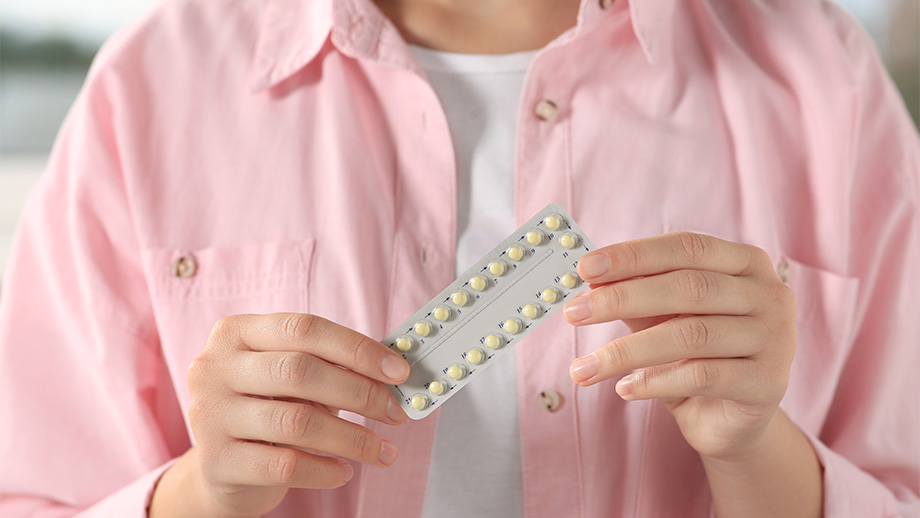
Oral Contraceptives / New Africa
Birth control may not work well for everyone as it can cause further hormonal imbalances and does not work to resolve the underlying issues. So when you stop taking the pill, the symptoms return.
Cosmetic Hair Removal Techniques
While the methods mentioned above work internally to target the root causes of hirsutism experienced in PCOS, many also look for ways to remove unwanted hair.
Hair removal methods include bleaching, shaving, plucking, waxing, chemical depilation, and laser therapy. However, some of these options cause harm.
Bleaching: Bleaching localized areas can lighten the appearance of hair and reduce its visibility. However, it may not have the same effects on all types of hair or skin tones.
Shaving: Shaving can work great for removing unwanted facial hair. While it may make the hair more blunt, it doesn’t increase the amount of hair growth. Dermaplaning razors can work great for PCOS facial hair removal.
Plucking and Waxing: Plucking and waxing facial hairs causes a lot of damage and is not recommended for hair removal.
According to the National Library of Medicine, this form of hair removal does not kill the hair follicles but “can induce folliculitis and trauma to the hair shaft with subsequent development of ingrown hairs and further skin damage.”
Chemical Depilation: From the same study, “Depilating agents, though useful, can result in chronic skin irritation and even worsening of the hair growth if used excessively or indiscriminately.”
Additionally, some people may have allergic reactions to chemical hair removal creams. Learn about all the risks and side effects before using this method.
Does Laser Hair Removal Work to Get Rid of PCOS Facial Hair?
Laser hair removal works to get rid of PCOS facial hair by killing the hair follicle without damaging the surrounding tissue. The laser or intense pulsed light heats the follicle and destroys it to prevent regrowth.
It does have its limitations, though. It takes many recurring sessions to lead to results. It also isn’t a permanent solution. It can still cause lots of skin irritation and doesn’t work as well on people with darker skin tones.
Also, laser hair removal can be expensive, and insurance doesn’t cover these procedures. However, laser hair removal has worked for many women suffering from hirsutism and can significantly reduce facial hair and slow its regrowth.
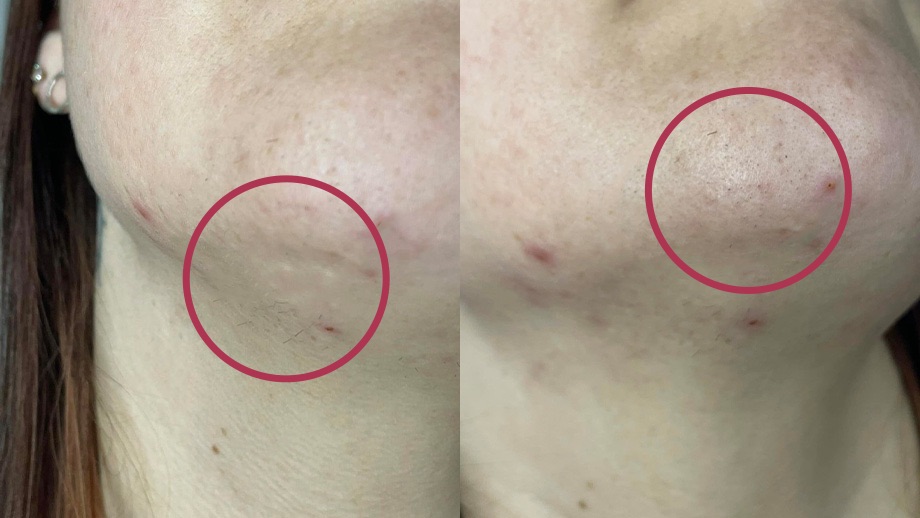
“..the areas I’ve circled on these pictures were so condensed with thick black coarse hair that no matter where I plucked, shaved or waxed I had a 5’clock shadow” – Donna S. – Swears by laser hair removal.
How to Live With the Daily Stresses of Excess Facial Hair From PCOS
Excess facial hair from PCOS and hirsutism can cause significant emotional impacts on a woman. This is a very noticeable and uncomfortable symptom that can lower self-esteem. That’s why finding support and resources can help you cope with daily stresses.
Self-Care Routine
Finding ways to manage your facial hair can help improve your outlook. However, it is also important to find ways to love yourself and your body despite the shortcomings.
Starting a self-care routine may include meditation, positive affirmations, beauty and healthcare products, and exercise.
Support Groups
Additionally, finding people to support and understand what you experience daily can help you manage some of the emotional tolls of hirsutism. You can find support groups on Facebook where women share issues, solutions, advice, and more.
For PCOS support, guidance & community join the Health & Balance Vitamins’ Official Facebook Group
Catering to more than 44,000 members from around the world with weekly challenges, inspiration, and unwavering support.
Join the group
PCOS Facial Hair Can Be Managed
If you struggle with PCOS facial hair, you have options for managing it. If some treatments have worked for others and not you, keep looking.
Treatment plans will look different for everyone, whether caused by androgenic or insulin-resistant PCOS. And remember that it may take a while to start seeing results.
Don’t give up on your wellness journey. You can manage hirsutism with the right help and support. Have you had any success with specific treatment options? Let us know in the comments below x
